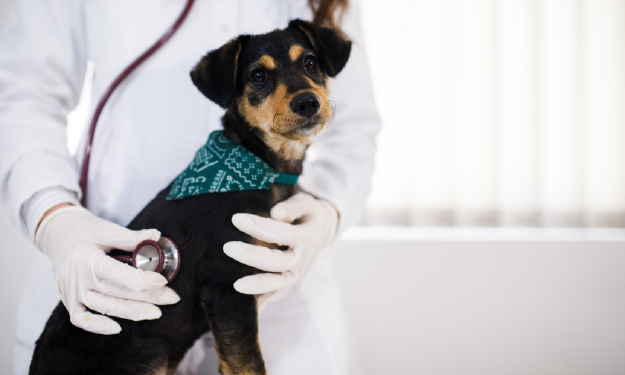Parvo Symptoms in a Puppy

Oh the excitement of welcoming a puppy into your family! But that excitement can turn to terror when your new puppy suddenly becomes listless, stops eating, and experiences vomiting and diarrhea and you don’t know why.
If only those precious pups could talk.
What is parvovirus?
Parvovirus is one of the many viruses that can cause canine diarrhea. What sets it apart are the severity of the disease and the ease of transmission. It more frequently strikes puppies and unvaccinated dogs, but can occasionally affect vaccinated adults.
How does a dog get parvo?
Dogs are exposed to parvovirus through feces of infected dogs or from surfaces that have previously been contaminated. The virus is very stable in the environment, often persisting through the winter, and can be carried unknowingly on shoes and clothing. Dogs usually develop signs between 3-10 days of initial infection and may continue to shed virus in their stool and may be considered contagious for several weeks.
Symptoms of Parvo in dogs
Symptoms can include:
- vomiting
- diarrhea (foul-smelling, sometimes bloody)
- abdominal pain
- severe lethargy
In addition to GI signs, parvovirus causes sharp declines in white blood cell numbers, resulting in a weakened immune system. Affected dogs are often at risk for dehydration, sepsis, and low blood sugar, protein and electrolyte levels.
Treatment for Parvo in puppies
Because dogs with parvovirus can be very debilitated, intensive treatment is usually necessary. Fluids, antibiotics, and anti-nausea medications are given, with additional electrolyte and sugar supplementation given if needed. Hospitalization and close monitoring is ideal, but outpatient treatment can be considered once the patient is stabilized. Unfortunately, treatment can be prolonged (4-5 days hospitalization is common) and quite expensive. Nursing care is exceptionally time consuming, with frequent cleaning and either syringe or tube feedings.
Many disinfectants are not strong enough to kill parvovirus on surfaces and outside. A 1-to-30-part bleach solution is typically used for disinfection. This equates to approximately ½ cup chlorine bleach in 1 gallon of water. However, the virus can survive a couple years in contaminated yards.
How to prevent your dog from getting Parvo
Parvovirus is a serious but preventable disease. With aggressive treatment, 80-90% survival rates are possible – without treatment, it is often fatal. However, both hospitalization and outpatient treatment can be financially and emotionally challenging.
The key to preventing parvovirus infection is vaccination. Newborn puppies receive antibodies from their mothers, and while helpful in very young puppies, they can interfere with the initial vaccinations. The exact point when the maternal antibodies wear off, leaving the puppy unprotected, is unknown, so 3-4 vaccinations are given between 6-18 weeks of age.